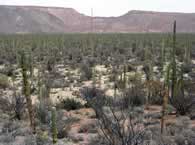
An effective way to find giant boojums: climb a hill to the height of average plants. The tall ones stand out. Montevideo Canyon has the tallest known boojums.
|

This is the tallest known boojum at 81.5 feet (by measuring its shadow). The cardón is over 60 feet tall. This picture was taken in 1981.
|

Hurricane Nora passed over the area in 1997 and felled many boojums and other plants, but the champ and its giant cardón companion survived. We got the same height measurement as in 1981. Because it was a cloudy day, the shadow-measuring technique may not have been accurate (the shadow of the tip was difficult to see). Photo: 2002. |
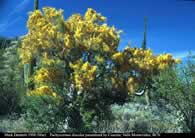
A Pachycormus infested with dodder (Cuscuta sp.). The same individuals tend to host this annual parasitic morning glory year after year with no apparent harm. |
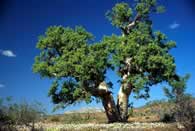
A large Pachycormus in full leaf (without dodder). |
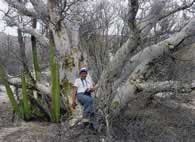
A huge Pachycormus, more than 40 feet wide. The deep granite gravel of Montevideo Canyon fosters giant plants. |
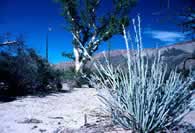
A large specimen of Pedilanthus macrocarpus, one of the few succulent spurges (Euphorbiaceae) in the New World.
|
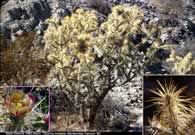
Cylindropuntia molesta attains unusually large size in Montevideo Canyon. The wicked spines are responsible for its apt name. |
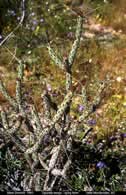
At the other extreme of spininess is Cylindropuntia tesajo; some specimens are spineless. |
